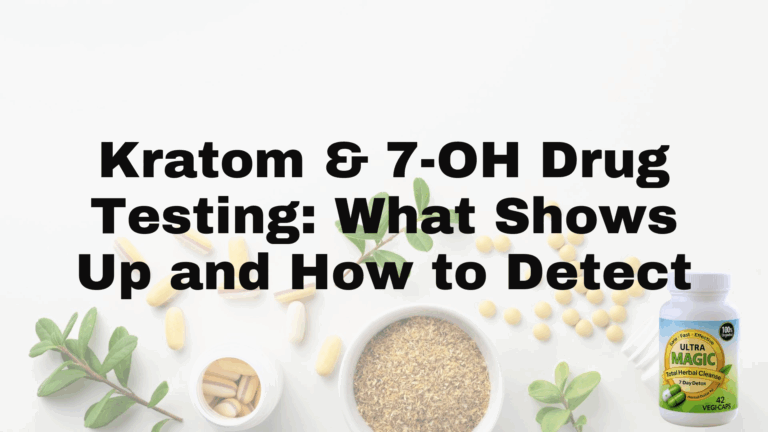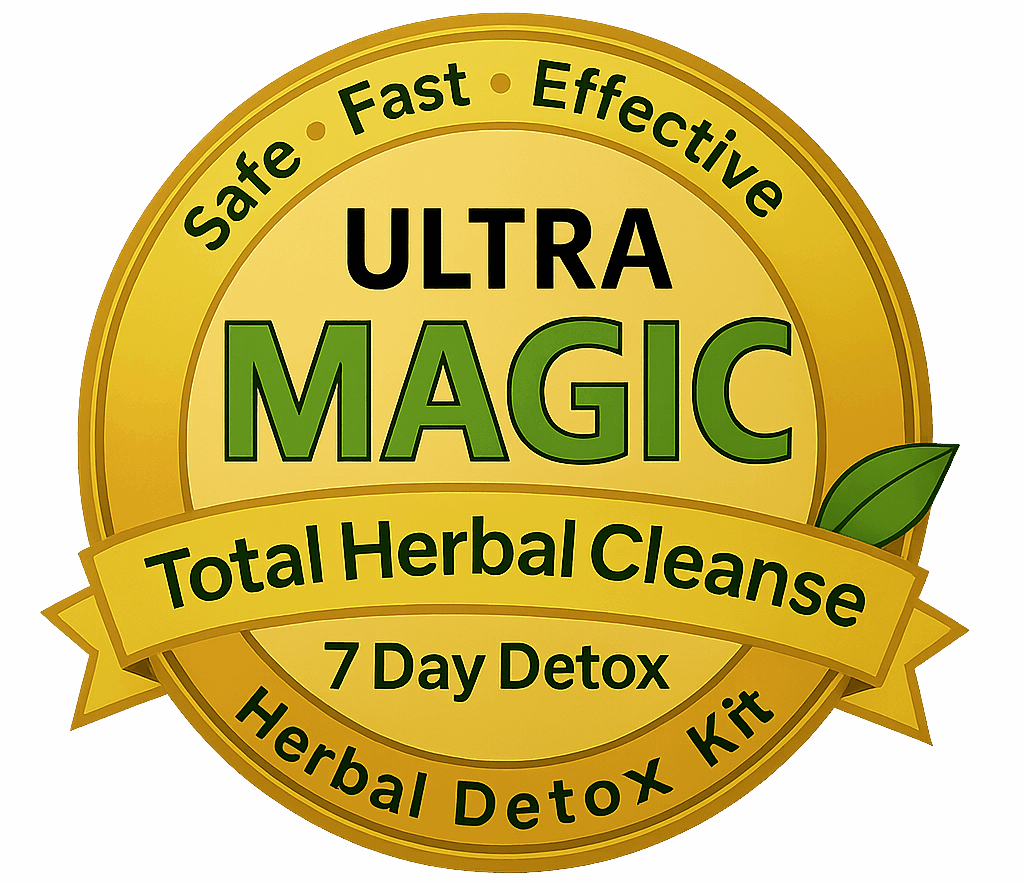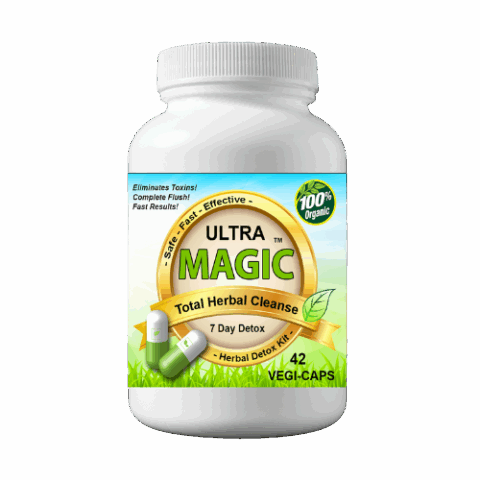
Kratom & 7-OH Drug Testing: What Shows Up and How to Detect
“Kratom & 7‑OH drug testing” simply means tests that look for kratom’s primary alkaloids—mitragynine—and its much more potent, opioid‑like relative 7‑hydroxymitragynine (7‑OH). Unlike routine opioid screens, which target morphine, codeine, or semi‑synthetics, these tests specifically measure kratom compounds in urine, saliva (oral fluid), blood, or hair. Most standard 5‑ or 10‑panel screens do not include kratom or 7‑OH by default, but specialized panels and confirmatory methods can detect them. Whether they show up depends on the test ordered, the specimen type, how often someone uses kratom, and how concentrated or “enhanced” a product might be.
This guide explains exactly what does—and doesn’t—show up on common workplace panels, which testing options can find kratom or 7‑OH, and how labs detect them (rapid immunoassays vs. definitive LC‑MS/MS). You’ll also get practical detection windows by specimen type, factors that influence clearance, whether kratom can cause false positives for opioids, and what a targeted kratom/7‑OH test looks like. We’ll close with the regulatory picture (including FDA, state, and military actions), safety considerations around concentrated 7‑OH products, tips for employers, how to spot “enhanced” labels, and quick FAQs—so you can make informed, compliant decisions.
What kratom, mitragynine, and 7‑OH are
Kratom (Mitragyna speciosa) is a Southeast Asian tree whose leaves contain psychoactive alkaloids. The primary compound is mitragynine; its far more potent relative, 7‑hydroxymitragynine (7‑OH), binds strongly to opioid receptors. 7‑OH occurs naturally in small amounts and can also be produced from mitragynine; increasingly, retail products contain isolated or highly concentrated 7‑OH in gummies, shots, tablets, or drink mixes. In laboratory models, 7‑OH shows markedly higher opioid potency than morphine, so concentrated 7‑OH behaves like a true opioid—not like traditional kratom tea. That’s why kratom & 7‑OH drug testing targets these specific analytes rather than relying on generic “opioid” screens.
- Also labeled as: 7‑OH, 7‑HMG, 7OHM
- Common kratom names: Thang, Kakuam, Thom, Ketum, Biak
What shows up on standard drug panels (5-, 10-panel, DOT)
Here’s the bottom line: standard employer panels don’t look for kratom’s alkaloids. Multiple sources confirm that most 5‑ and 10‑panel workplace screens omit mitragynine and 7‑OH, so routine “opioid” or “opiates” lines won’t catch kratom use. That includes safety‑sensitive testing programs, where recent data still found notable 7‑OH positivity despite traditional panels being negative for opioids. If kratom & 7‑OH drug testing isn’t explicitly ordered, it’s usually not happening.
- 5‑panel workplace screens: focus on common drug classes; do not include kratom or 7‑OH by default.
- 10‑panel screens: add more drug classes but still omit kratom analytes unless specifically requested.
- DOT‑regulated testing: targets federally mandated drug classes; like other standard panels, kratom/7‑OH are not included unless a separate, targeted panel is ordered.
Assuming “opioids” automatically covers 7‑OH is the same mistake many made with fentanyl—these markers must be added on purpose, via a specialized assay and confirmatory method.
Which tests can detect kratom or 7‑OH
To actually find kratom, the test must target its alkaloids. Labs offer add‑on/custom assays that specifically measure mitragynine and 7‑hydroxymitragynine (7‑OH); these aren’t part of routine 5‑/10‑panel or DOT testing. Any panel that explicitly lists mitragynine and 7‑OH can identify kratom use if present, with results typically confirmed by definitive mass‑spectrometry methods.
- Targeted urine panels (LC‑MS/MS): Most common for workplace testing; ordered as non‑DOT add‑ons.
- Oral fluid (targeted): Useful for recent use; also requires a dedicated kratom/7‑OH panel.
- Blood/serum (targeted): Primarily clinical or post‑incident; measures current circulating levels.
- Comprehensive tox screens (by request): Some labs include mitragynine/7‑OH in expanded LC‑MS/MS menus.
- Hair (where available): Forensic specialty; not routine, but can extend the detection window.
Ask your provider for the exact analytes and test code; “opioids” alone will not cover kratom/7‑OH.
How labs detect kratom and 7‑OH: immunoassays vs. LC‑MS/MS
Most routine workplace testing begins with rapid immunoassays, but those screens are designed around classic drug classes and typically don’t target mitragynine or 7‑OH. That’s why kratom often flies under the radar on a “standard” cup test. To reliably identify kratom use, labs lean on definitive, targeted methods such as LC‑MS/MS.
- Immunoassays (screening): Antibody‑based, fast, and inexpensive. They generally do not include kratom analytes and “opiates” immunoassays won’t catch 7‑OH, leading to false negatives for kratom use. Cross‑reactivity can occur, so any presumptive hit requires confirmation.
- LC‑MS/MS (definitive testing): Chromatography separates compounds and mass spectrometry confirms identity at very low levels. Panels explicitly listing “mitragynine” and “7‑hydroxymitragynine” provide specific, quantitative results and minimize false positives.
In practice, targeted LC‑MS/MS may be ordered as the primary test or as confirmation when a specialized kratom/7‑OH screen is requested. Cutoffs and reporting thresholds vary by lab, but the key is simple: if the panel doesn’t name mitragynine and 7‑OH, it’s unlikely to detect kratom.
Detection windows by specimen type
There isn’t a single “official” window for kratom & 7‑OH drug testing. Look‑back depends on the specimen, the lab’s cutoffs, the analyte(s) targeted (mitragynine, 7‑OH), frequency of use, dose, product type (especially concentrated 7‑OH), and metabolism. Think in terms of relative windows, not fixed days.
- Urine: Most common for workplaces. Captures recent use across casual to frequent patterns when a targeted LC‑MS/MS panel includes mitragynine and 7‑OH. Windows are highly test‑ and use‑dependent.
- Oral fluid (saliva): Shorter window than urine and useful for very recent exposure. Good for on‑site or observed collections; requires a dedicated kratom/7‑OH assay.
- Blood/serum: Short, “right‑now” detection of circulating levels. Used clinically or post‑incident; targeted testing is necessary for mitragynine/7‑OH.
- Hair: Longest historical view (retrospective pattern of use) when available through specialty labs. Not routinely used in workplace panels but can include mitragynine/7‑OH if specifically ordered.
Because base panels and typical immunoassays omit kratom analytes, detection windows only apply when a targeted method is used. A negative standard “opiates” result does not rule out kratom or concentrated 7‑OH use unless the panel explicitly lists these analytes.
Factors that influence detection and clearance
How long kratom or 7‑OH are detectable isn’t one-size-fits-all. In kratom & 7‑OH drug testing, detection hinges on the amount and pattern of use, whether the product is an “enhanced” extract with isolated 7‑OH, the specimen type and lab cutoffs, and individual metabolism. Co‑used medications can also alter kratom alkaloid metabolism, and definitive methods (LC‑MS/MS) will find lower levels than quick screens.
- Dose and frequency: Heavier, chronic use extends detectability compared with occasional use.
- Product potency: Concentrated or isolated 7‑OH (gummies, shots, drink mixes) increases exposure.
- Time since last use: Recent use is far easier to detect than distant use.
- Specimen and cutoffs: Urine typically outlasts oral fluid; hair looks back the longest when used.
- Metabolism and health: Liver/kidney function, age, and body mass influence clearance.
- Drug interactions: Some medicines/supplements can inhibit or induce kratom alkaloid metabolism.
- Urine concentration: More concentrated urine yields higher analyte levels at the same dose.
- Analytical method: LC‑MS/MS detects and confirms at lower levels than immunoassays.
Will kratom or 7‑OH trigger a false positive for opioids?
Short answer: generally no. Standard “opiates/opioids” immunoassays are tuned to morphine/codeine or specific semi‑synthetics, and kratom’s alkaloids (mitragynine, 7‑OH) are structurally distinct. In routine panels, kratom is usually missed—not misidentified. If kratom & 7‑OH drug testing is ordered, labs use targeted assays (typically LC‑MS/MS) and report the actual analytes (mitragynine and/or 7‑hydroxymitragynine), not a generic “opioid” hit. As with any screening, rare cross‑reactivity can occur, which is why definitive confirmation resolves ambiguities.
- Targeted panels won’t call kratom “opiates”; they report mitragynine/7‑OH by name.
- Expanded toxicology profiles may include kratom analytes but still identify them specifically.
- Any presumptive screen should be confirmed by LC‑MS/MS before action is taken.
What to expect during a targeted kratom/7‑OH test
A targeted kratom & 7‑OH drug test isn’t a generic “opioids” screen—it’s an assay that specifically measures mitragynine and 7‑hydroxymitragynine, usually by LC‑MS/MS. Collection follows the same professional procedures used for workplace testing, but the lab report will list these analytes by name. Because standard immunoassays often miss kratom, many programs go straight to definitive testing with lab‑set cutoffs and clear identification.
- Order specifics: The request must name “mitragynine” and “7‑hydroxymitragynine.”
- Specimen: Urine is most common; oral fluid, blood, or hair may be used when specified.
- Collection: ID verification and documented handling; workplaces use chain‑of‑custody.
- Analysis: Targeted screening and/or direct LC‑MS/MS confirmation.
- Results: Reported as mitragynine/7‑OH (qualitative and often quantitative), not “opiates.”
- Review: You may be asked about product use; FDA notes there are no approved 7‑OH drugs.
- Disputes: Policies may allow retest/confirmation at a certified reference lab.
Regulatory landscape to watch (FDA, state actions, military, employer policies)
Rules around kratom & 7‑OH drug testing are changing quickly, with regulators zeroing in on concentrated 7‑OH products found in gas stations and vape shops. Expect uneven adoption across jurisdictions and sectors—federal guidance, state scheduling, military bans, and employers updating panels to close risk gaps.
- Federal (FDA): In July 2025, FDA announced steps to restrict concentrated 7‑OH and recommended scheduling under the Controlled Substances Act. FDA notes there are no FDA‑approved 7‑OH drugs, and 7‑OH is not lawful in dietary supplements or conventional foods. The focus is on concentrated 7‑OH, not natural kratom leaf.
- States: Florida’s Attorney General issued an emergency rule on Aug. 13, 2025, classifying isolated/concentrated 7‑OH as Schedule I. Other states are signaling action—expect a patchwork similar to synthetic cannabinoids.
- Military: DoD policy (memo dated Sept. 15, 2025; effective Dec. 31, 2025) prohibits all kratom, mitragynine, and 7‑OH products for Service Members, enforceable under the UCMJ.
- Employers: Standard 5/10‑panels miss kratom/7‑OH. Consider adding targeted LC‑MS/MS assays (mitragynine and 7‑OH named), updating policy language, training reviewers, and monitoring evolving federal/state rules.
Health and safety considerations, especially with concentrated 7‑OH
Concentrated 7‑OH (7‑hydroxymitragynine) products act like powerful opioids and have been reported as far more potent than morphine (some sources estimate ~13×). FDA has warned that isolated/high‑concentration 7‑OH—often sold as gummies, shots, tablets, or drink mixes in gas stations and vape shops—is not lawful in dietary supplements or conventional foods and carries opioid‑type risks: sedation, respiratory depression, and addiction. Reports also note seizures, cardiac events, liver injury, and withdrawal. Compounding the danger, some kratom items have contained artificially elevated 7‑OH, and drug–drug interactions can intensify effects. For safety‑sensitive work, the combination of potent impairment and routine panel blind spots makes targeted kratom & 7‑OH drug testing a critical control.
- High‑potency formats: Isolated or “enhanced” 7‑OH extracts raise overdose and dependency risk.
- Opioid‑like harms: Sedation, slowed breathing, withdrawal; emergency events have been documented.
- Adulteration risks: Unnaturally high 7‑OH or other contaminants have been found in some products.
- Interactions: Other CNS depressants (alcohol, benzodiazepines, opioids) can dangerously amplify effects.
For employers: adding kratom/7‑OH to your testing program
If safety is on the line, assume your current 5‑/10‑panel won’t catch kratom. Early lab data show meaningful 7‑OH positives even in safety‑sensitive samples, and regulators are moving against concentrated 7‑OH products. The fix is straightforward: add a targeted kratom & 7‑OH drug testing panel that names the analytes and uses definitive confirmation.
- Update policy language: Explicitly list “mitragynine” and “7‑hydroxymitragynine (7‑OH).” Clarify when the panel applies (pre‑employment, random, post‑accident, reasonable suspicion, return‑to‑duty).
- Select the right method: Require LC‑MS/MS confirmation with stated cutoffs. Do not rely on generic “opiates” immunoassays.
- Choose specimen wisely: Urine for breadth and logistics; oral fluid for recent use; hair for historical review (where available).
- Align with MRO/legal: Train reviewers on kratom‑specific results and evolving FDA/state rules; verify chain‑of‑custody and documentation.
- Communicate and consent: Notify employees of the added analytes, update forms, and provide education on risks of concentrated 7‑OH.
- Pilot and monitor: Launch in high‑risk roles first, track positivity, adjust cutoffs/policies, and audit vendors’ test codes to ensure mitragynine/7‑OH are actually included.
How to recognize 7‑OH and “enhanced” kratom products
A quick rule: the slicker and more “energy‑shot” the packaging, the more likely you’re looking at concentrated 7‑OH rather than traditional kratom leaf. FDA and military briefings warn that potent 7‑OH is being sold in gas stations and vape shops as gummies, shots, tablets, drink mixes, and even vapes—often marketed as plant‑based “advanced” extracts.
- Look for the names: 7‑OH, 7‑HMG, 7OHM, 7‑hydroxymitragynine.
- Ingredient giveaways: “Mitragynine,” “mitragynine pseudoindoxyl,” or explicit 7‑OH amounts.
- Buzzwords that signal potency: “Enhanced,” “isolate,” “fortified,” “advanced/complex alkaloids,” “extra strength.”
- Youth‑style formats: Fruit‑flavored gummies, shots, seltzers, vapes.
- Fine‑print warnings: “May be habit‑forming” or “lead to dependency.”
- Retail context: Convenience stores/vape shops; “dietary supplement” labels despite FDA warnings.
- Too strong to be tea: High‑mg “extract” claims or fast‑acting “opioid‑like” effects are red flags.
FAQs about kratom and 7‑OH drug testing
The most common questions boil down to two things: what panels actually look for, and how targeted the lab method is. If kratom & 7‑OH drug testing isn’t specifically ordered, routine “opiates” screens usually miss it. When labs do target it, LC‑MS/MS confirms mitragynine and 7‑hydroxymitragynine by name.
- Does kratom show up on a 5‑ or 10‑panel? Not by default; it must be added.
- Will 7‑OH fail a drug test? Only if the panel includes 7‑OH; advanced screens can detect it.
- Does kratom cause an opioid positive? Generally no; targeted tests report mitragynine/7‑OH, not “opiates.”
- Does DOT test for kratom? No; employers may add a separate non‑DOT panel.
- How long is it detectable? Depends on specimen, use pattern, potency, and lab cutoffs; targeted panels are required.
- Which methods find it most reliably? Definitive LC‑MS/MS panels listing mitragynine and 7‑OH.
- Can an MRO accept a prescription for 7‑OH? FDA has no approved 7‑OH drugs.
- Are gas‑station 7‑OH products legal? FDA says concentrated 7‑OH isn’t lawful in supplements/foods; some states have restricted or scheduled it.
- What about the military? DoD prohibits kratom, mitragynine, and 7‑OH for Service Members.
Key takeaways
Kratom & 7‑OH drug testing boils down to one principle: if a panel doesn’t explicitly target mitragynine and 7‑hydroxymitragynine—preferably with LC‑MS/MS—routine 5/10‑panel or DOT testing will miss it. Detection hinges on specimen type, use pattern, product potency (especially concentrated 7‑OH), and lab cutoffs, against a fast‑moving regulatory backdrop.
- Standard panels omit kratom analytes: “Opiates/opioids” lines don’t cover mitragynine or 7‑OH.
- Order by name, confirm definitively: Ask for mitragynine and 7‑OH with LC‑MS/MS confirmation.
- Windows vary by specimen: Hair looks back longest; blood is shortest; urine and oral fluid sit between—when targeted.
- Not an “opioid” false positive: Targeted tests identify kratom analytes by name, not as generic opiates.
- Regulators are acting on 7‑OH: FDA flagged concentrated 7‑OH; states and the military have imposed restrictions.
- Employers should update programs: Add analytes, specify methods, align policy/MRO review, and educate teams.
If you’re focused on wellness and want a clean slate while you plan smarter choices, consider a structured reset. Our 7‑day, full‑body herbal cleanse was built for simplicity and discretion—learn more at Magic Detox and decide if it fits your routine and goals.



